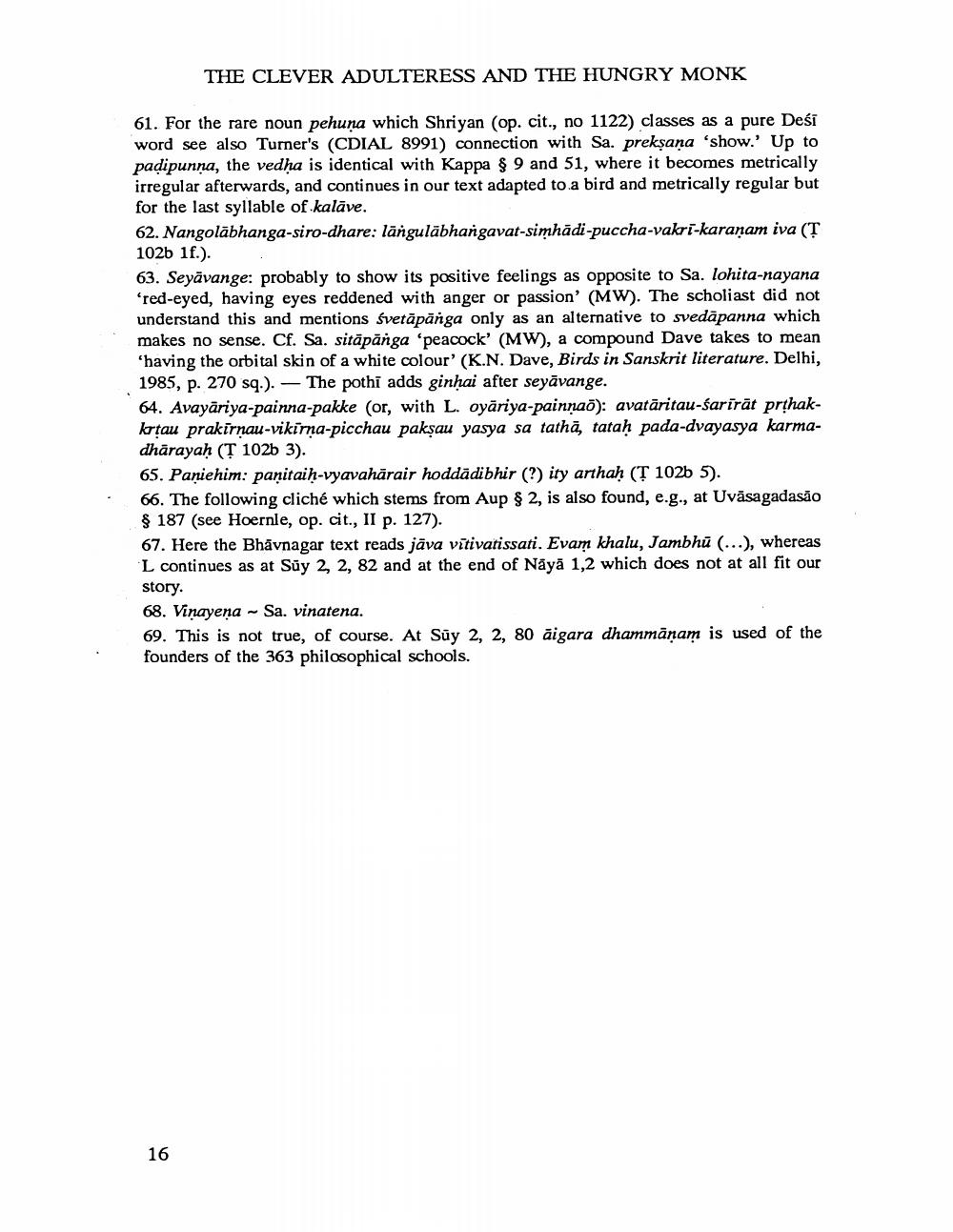________________ THE CLEVER ADULTERESS AND THE HUNGRY MONK 61. For the rare noun pehuna which Shriyan (op. cit., no 1122) classes as a pure Desi word see also Turner's (CDIAL 8991) connection with Sa. preksana 'show.' Up to padipunna, the vedha is identical with Kappa SS 9 and 51, where it becomes metrically irregular afterwards, and continues in our text adapted to a bird and metrically regular but for the last syllable of.kalave. 62. Nangolabhanga-siro-dhare: langulabhangavat-simhadi-puccha-vakri-karanam iva (T 1026 1f.). 63. Seyavange: probably to show its positive feelings as opposite to Sa. lohita-nayana 'red-eyed, having eyes reddened with anger or passion' (MW). The scholiast did not understand this and mentions svetapanga only as an alternative to svedapanna which makes no sense. Cf. Sa. sitapanga 'peacock' (MW), a compound Dave takes to mean 'having the orbital skin of a white colour' (K.N. Dave, Birds in Sanskrit literature. Delhi, 1985, p. 270 sq.). -- The pothi adds ginhai after seyavange. 64. Avayariya-painna-pakke (or, with L. oyariya-painnao): avataritau-sarirat prthakkrtau prakirnau-vikirna-picchau paksau yasya sa tatha, tatah pada-dvayasya karmadharayah (T 102b 3). 65. Paniehim: paaitaih-vyavaharair hoddadibhir (?) ity arthah (T 102b 5). 66. The following cliche which stems from Aup $ 2, is also found, e.g., at Uvasagadasao $ 187 (see Hoernle, op. cit., II p. 127). 67. Here the Bhavnagar text reads java vitivatissati. Evam khalu, Jambhu (...), whereas L continues as at Suy 2, 2, 82 and at the end of Naya 1,2 which does not at all fit our story. 68. Vinayena ~ Sa. vinatena. 69. This is not true, of course. At Suy 2, 2, 80 aigara dhammanam is used of the founders of the 363 philosophical schools. lo




